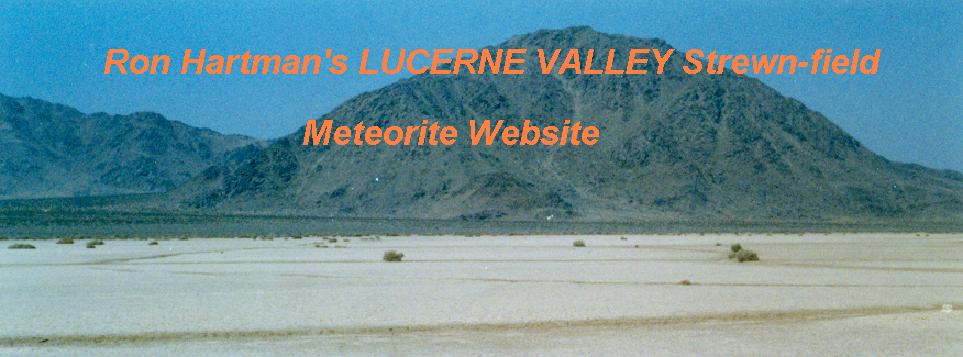

Lucerne Dry Lake, Mojave Desert, San Bernardino County, Southern California
Ron's [former] e-mail: RHARTMANxx@earthlink.net (you will need to insert 04 in place of xx and then click on a link to request spam unblocking. (The email address has been separated here to foil automated spam spiders.)
Ronald N. Hartman (1935-2011), [former] Professor of Astronomy, Dept. of Earth Sciences & Astronomy, Mt. San Antonio College, Walnut, CA 91789 (909) 594-5611 Extension 4704
A personal account:
(Updated August 1, 1999 and Nov. 12, 2004 and August 8, 2012)
For other articles by this author and others, results of the ongoing study of the Lucerne Valley (LV) meteorites, technical information, please go to the following Lucerne websites maintained by Robert Verish:
click here to go to Bob Verish's Lucerne website w/articles/photos
click here to go to LV 017, the latest LV discovery (maintained also by Bob)
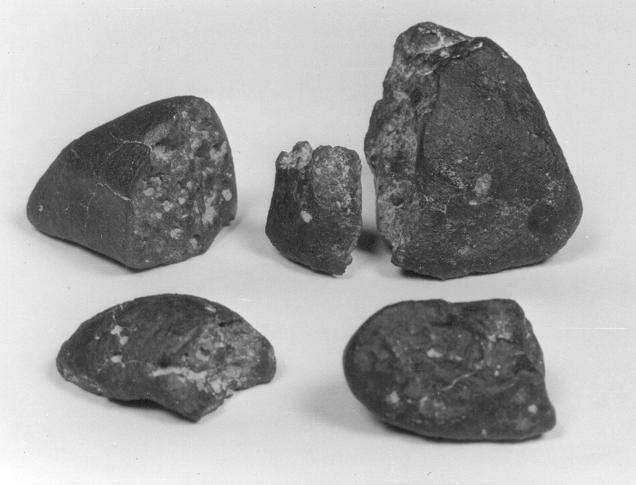
FIVE OF THE ORIGINAL LUCERNE VALLEY METEORITES FOUND IN 1963-64
THE DISCOVERY ARTICLE APPEARED IN METEORITICS: Journal of the Meteoritical Society, V.2, no. 2, Feb. 1964
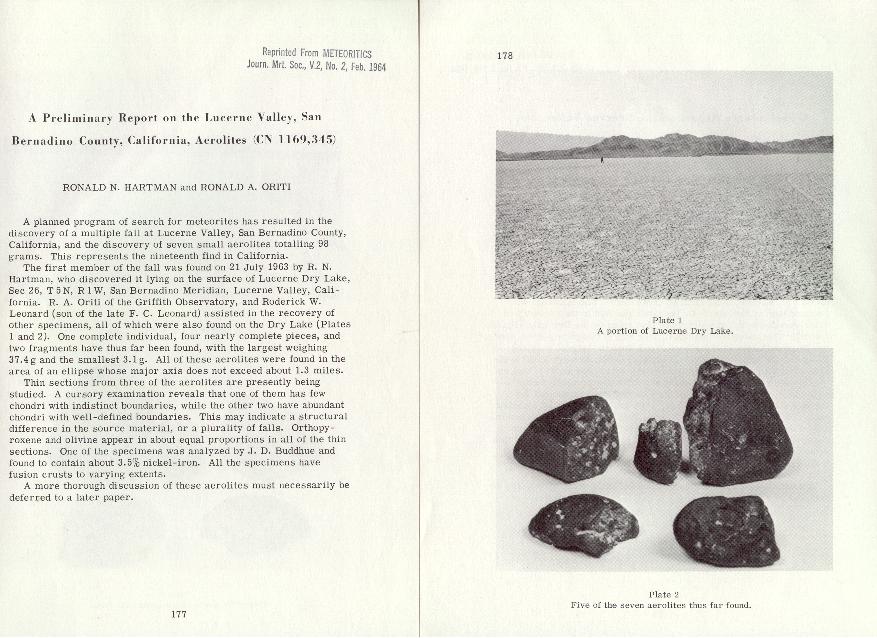
CIRCUMSTANCES OF DISCOVERY: In 1963 I became interested in investigating dry lakes for meteorites. A number of meteorites had been found on other nearby dry lakes,including Rosamond and Muroc (Rogers). It seemed worth the effort to investigate other nearby dry lakes. Not to say that one would expect meteorites to selectively fall on a dry lake bed, but rather, that once fallen, one could more easily be noticed as these regions are relatively free of rocks. One can search a large area rather quickly. A dry lake is also a basin. Once fallen, a meteorite is not going anywhere! It will remain until it either disintegrates or is possibly buried.
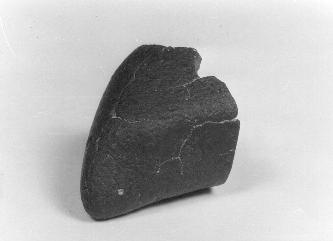 |
The plan was to lay out a grid using grape stakes with painted tips, and search the entire region (a rather large one, at that). As luck would have it, the first specimen (LV 001 in the recent literature) ( left ) was located after only 2 hours , toward the end of the first day of searching on July 21, 1963. It's mass was only 15.8 g. In fact, the black fusion crust lay buried facing downward in a small blowout of small pebbles, just about 30 feet or so west of what is known as the old Barstow Road (Hyw. 247). The edge of the dry lake slowly merges into a hummocky grassy land, but this specimen definitely was in the SE corner of the lake itself. My attention was drawn to it by the broken section (the way it was broken!) which was facing upward. The very black fusion crust was, if fact, buried and not noticed until I picked it up! The specimen was weakly attracted to a magnet. A corner filed smoothly revealed metallic flakes. |
| The second
and third meteorites, LV 002 and LV 003, were found the next
month, on our second trip, by Ronald Oriti, then lecturer
at the Griffith Observatory whom I had invited to join in
the search along with Robert Gale, Curator of mineralogy
at the Los Angeles County Museum. Soon thereafter, I
found LV 004 (37.4 g., the largest found to date) and LV 005
(3.1 g.) ( right ) within a few yards of one another. LV 005
was in fact perched on the edge of a gully bordrering the
shoulder of the road, ready to tumble into fresh mud at
the slightest whisper of wind. On the way home, it was
discovered that the smaller was actually a small corner
that had obviously only recently broken off the larger,
and had washed down a slight grade toward the road. Over the next five years, six other searchers found a total of seven small individuals with a total mass of only 48.1g. (Oriti, Griffith Observer, Dec. 1968) Although I had made several trips back to LDL during subsequent years, spending many tens of hours searching, nothing more was found. |
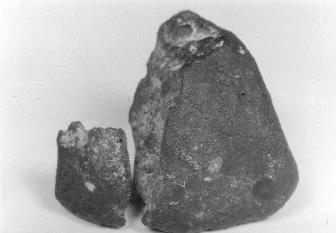 |
Inspired by Bob Verish's remarkable discovery of three additional Lucernes in the latter part of 1998, I ventured out once again on March 30, 1999, along with Mt. San Antonio College Planetarium staff members Jeff Schroeder and Karen Isa. It was a windy day. (Jeff had trouble holding on to the map. In fact, we found out that his top speed was 20 mph!))
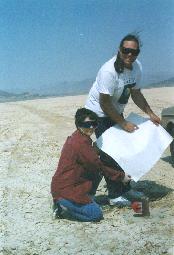 |
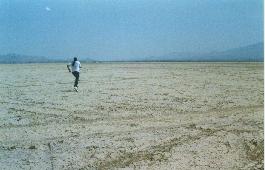 |
 |
|
Following are views of LV4. Note the roughness of the fusion crust compared with LV017:
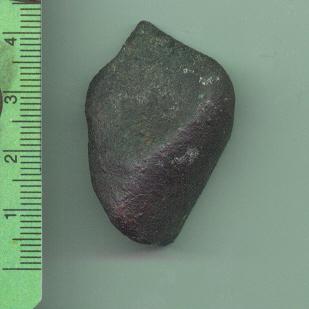 |
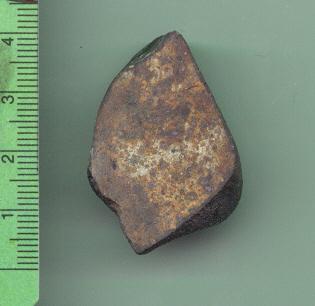 |
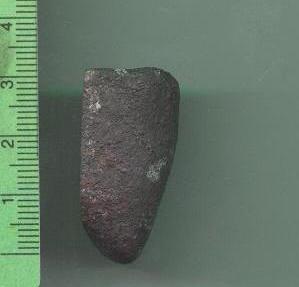 |
More to come, I'm sure. We, along with many others, continue to search the vicinity on and around LDL and have expanded that search to adjacent areas. There have been many great successes since the initial discovery, both at LDL and inthe vicinity of other California and Nevade dry lakes, inspired by the LDL investigations. Results are documented periodically in The Meteoritical Bulletin. For those who are interested in finding a meteorite, the region of the Mojave Desert East and North of Lucerne Dry Lake offer excellent areas to look. Note that California meteorites found in San Bernardino County, in the Mojave desert, have usually been found not too distant from major highways and roads. There is a vast region waiting to be searched. You may search, yourself. Obtain a topographical map from the USGS, take a GPS unit so you don't get lost, define a region, (bring plenty of water with you) and look! Don't expect too much. I have spent many hundreds of hours searching. History has shown one thing: meteorite hunters who know how to recognize a meteorite usually will find one sooner or later. In the meantime, it is a way to get some fresh air and a lot of exercise.
I will be happy to discuss the process of meteorite hunting with you!
Interested in searching California Dry Lakes???? ENTER HERE for a directory including Lucerne Dry Lake.
Free counters provided by Honesty
Communications.